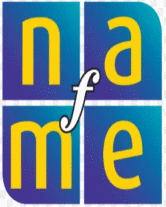Use chords to help students in grades 5-8 play simple tunes on a melodic instrument and simple accompaniments on a harmonic instrument. Meets National Content Standard 2.
Objective
Students will play melodies and determine appropriate harmonic accompaniments by ear.
Materials
- Choir chimes, resonator bells, or Orff mallet instruments
- Songs using I, IV, and V chords in the key of C, such as "All Night, All Day," "Let Us Break Bread Together," "We Gather Together," "The First Noel," "Yankee Doodle," "I've Been Working on the Railroad," "Oh, Susanna," "America," "Twinkle, Twinkle, Little Star," "Jingle Bells," "Away in a Manger," and "De colores"
- Song notation (without chords) for the selected songs
Prior Knowledge and Experience
Students have had group experience playing chords.
Procedures
- Review with students which pitches are in the I (C), IV (F), and V (G) chords in the key of C. Assign each student in a small group to play either the root, the third, or the fifth of these chords on choir chimes, resonator bells, or Orff mallet instruments. Then lead the group in playing various progressions of the three chords.
- For one of the selected songs, have the class establish the starting pitch and sing the song without an accompaniment.
- Ask the group of students that has the instruments to play the I IV V I chord progression on their instruments as all students listen for the special sound of each chord.
- Review the song notation and have students identify where certain chords might be included (for example, using the I chord as the final chord or in places where chord tones are obvious). Have students pencil in the possibilities above the melody notation.
- Have students playing the instruments perform the suggested chords as they sing with the class. Encourage different suggestions and experimentation as they make their decisions "by ear."
- Follow steps 2-5 with several of the other songs, giving otherstudents the opportunity to play the instruments. Have studentsidentify commonalties in the chord progressions that "work" (forexample, each song always ends on the I chord, and the pitches inthe melody are often the same as those in the chord).
Indicators of Success
- Students make accurate decisions regarding song accompaniments.
- Students transfer knowledge to increasingly complex songs.
- Students discover that there are patterns to most chord progressions.
Extension Activity
Introduce V7, ii, and vi chords and have students experiment withusing them to accompany the songs used in the procedures.Encourage them to discover which chords seem to "work" best.
Standards Correlation
Standard 2d
:Performing on instruments, alone and with others, a varied repertoire of music.
Excerpted from Strategies for Teaching Middle-Level General Music.

| Provided in partnership with NAfME |
Use chords to help students in grades 5-8 play simple tunes on a melodic instrument and simple accompaniments on a harmonic instrument.
Subjects
TYPE:




